Welcome
Melton Carnegie Museum traces the social and economic history of Melton from the Bronze Age to the present day. The galleries on the ground floor include exhibitions on the town's world-renowned Stilton cheese and pork pie industries and the history of fox hunting. The museum is housed in the town's former Carnegie Library, built in 1905 with a grant from the industrialist Andrew Carnegie; the building became the town's museum in 1977.
The museum has a Changing Places facility, a large meeting room which is available to hire, in addition to a small local studies collection which supports local and family history research, and includes books and records about the history of fox hunting.
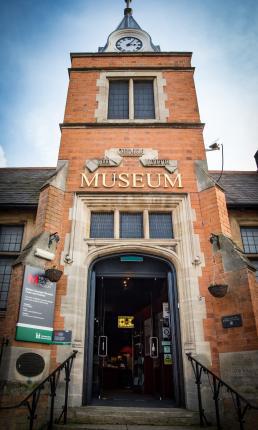
Level access
There is level access from the main entrance to:
Painting the Town Red galleryHistory of Foxhunting galleryRural Life galleryShops and Trades galleryMelton Through The Ages galleryTemporary exhibition galleryFirst floor including Community RoomFront deskGround floor toiletsFirst floor toiletsMuseum shopMuseum yardHearing
Visual
General
Getting here
Travel by public transport
Melton Mowbray train station is at the bottom of Burton Street by the Melton Borough Council Offices. Buses stop at Windsor Street and most foot paths in Melton Mowbray have dropped kerbs.
Travel by taxi
Taxis are available from ranks at the train station, Wilton Road, Sherrard Street (opposite Windsor Street) and High Street.
Parking
There is a dropped kerb by the Tuxford and Tebbut Stilton Cheese creamery, which is five doors down from Melton Carnegie Museum. The drop-off point is limited to one hour parking, and extends down the street. There is another dropped kerb at the junction of Thorpe End and Rosebery Avenue, also outside the museum.
The closest car park is on Mill Street (LE13 1AY) and you can find more information about car parks on the Melton Borough Council website: http://www.melton.gov.uk/info/200072/parking
The surface from the car park to the entrance of the museum is a mix of paved and tarmac surfaces.
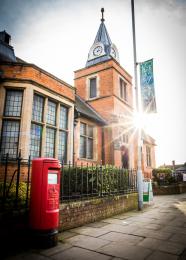
Arrival
Path to main entrance
Main entrance
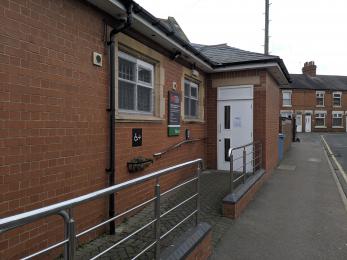
Getting around inside
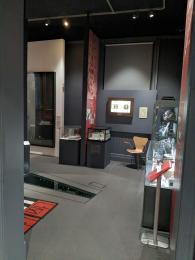
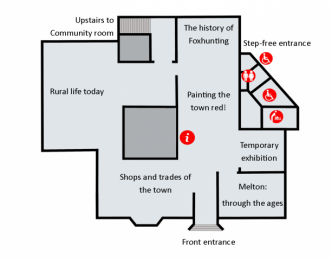
Lift
Lift to Community Room
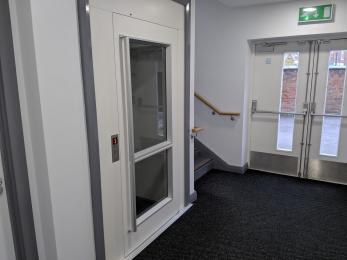
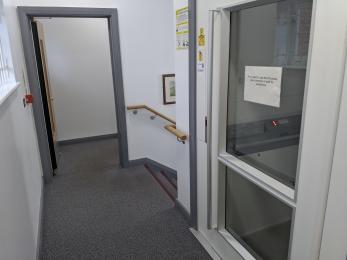
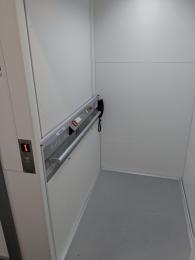
Ticket/ information desk
Front desk
The museum is free to enter and the desk offers information about the museum, local tourist attractions, access to the museum's shop and tickets for events and talks can be purchased. This area of the museum is carpeted and features low lighting.
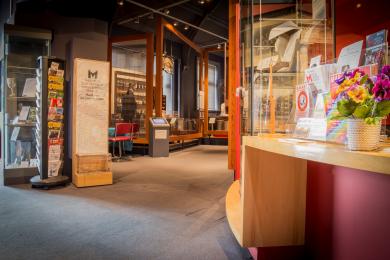
Painting the Town Red gallery
The Painting the Town Red gallery is next to the front desk and does not have any videos. This area of the museum is carpeted and features low lighting.
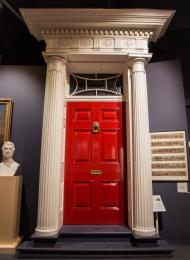
History of Foxhunting gallery
The History of Foxhunting gallery is next to the accessible entrance and features digital screens with slideshows, including descriptive titles for each image. There are some button-activated sounds for visitors to use. This area of the museum is carpeted and features low lighting.
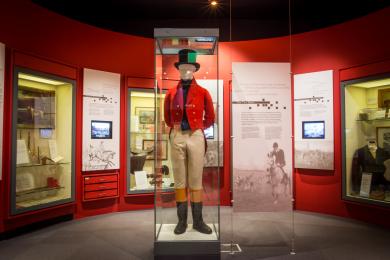
Rural Life gallery
The Rural Life gallery is accessed via the Shops and Trades gallery or from the Painting the Town Red gallery, by going past the rear door lobby and telephone kiosk and interactive floor, which both play sound. The gallery features digital screens with slideshows, including descriptive titles for each image. There are some button-activated sounds for visitors to use.
This area of the museum is carpeted and features low lighting.
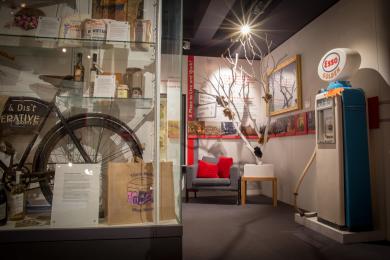
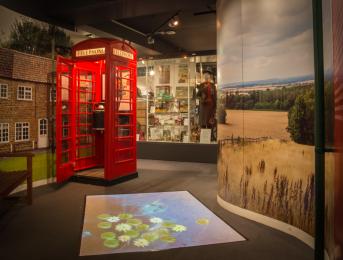
Shops and Trades gallery
The Shops and Trades gallery is next to the main entrance and front desk and features digital screens with slideshows, including descriptive titles for each image. There is a continuous sound of a market being played.
This area of the museum is carpeted and features low lighting.
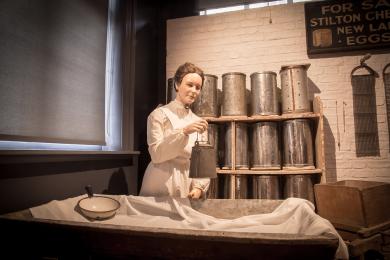
Melton Through The Ages gallery
The Melton Through The Ages gallery is next to the main entrance and the temporary exhibition gallery. This area of the museum is carpeted and features low lighting.
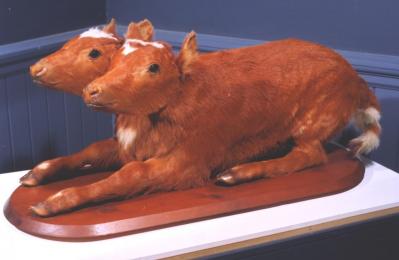
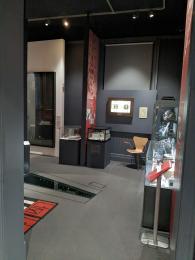
Temporary exhibition gallery
The temporary exhibition gallery hosts temporary exhibitions and children's activities during holidays. It is accessed through two glass doors and has a laminate floor surface, and brighter lighting than other parts of the museum.
Videos may be used in exhibitions and we ask exhibitors to include subtitles and/or a transcript.
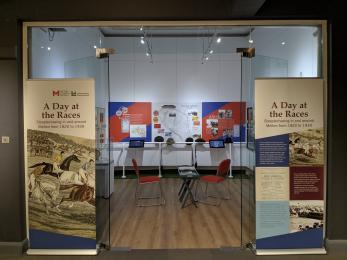
First floor including Community Room
The first floor is accessed from the rear lobby, which is carpeted. Visitors can use the stairs or platform lift to gain access.
On the first floor there is a carpeted landing including male, female and accessible toilet and a Community Room. The Community Room has a laminate floor surface, windows and strip lighting.
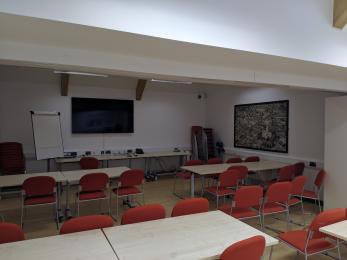
Public toilet
Ground floor toilets
All toilets have hand driers, which can be noisy.
On the ground floor there are four toilets each in a separate room. The toilets are accessed from a lobby which is accessed from the reception area. There is an accessible toilet with sink, hand dryer and sanitary disposal bin. There are also coat hooks at two heights, a mirror, and a nappy changing unit and nappy disposal bin.
There is a Changing Places toilet with hoist and bed, sanitary disposal unit, sink, hand dryer, coat hooks and mirror.
There is a further separate cubicle with a toilet, sanitary disposal unit, sink and hand dryer. There is another separate cubicle with toilet, sink and hand dryer.
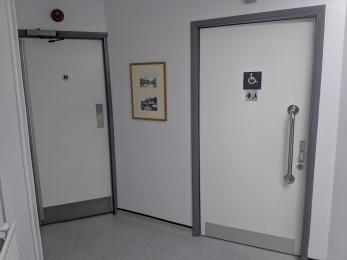
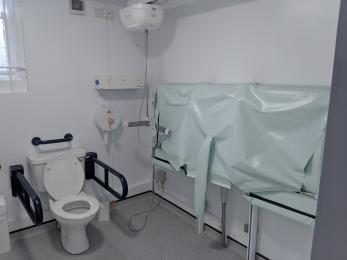
Public toilet
First floor toilets
On the first floor opposite the meeting room there are three further toilets each in separate rooms:
An accessible toilet with sink, hand dryer, sanitary disposal unit, nappy disposal unit and baby change.
A single cubicle with toilet, sink and hand dryer.
A single cubicle with toilet, sink, hand dryer and sanitary disposal unit.
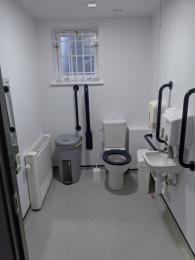
Shop
Museum shop
The museum shop is next to the front desk and Painting the Town Red gallery. Some items are on shelves and staff can help get anything you would like to look at or buy.
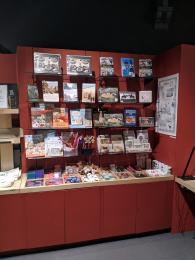
Getting around outside
The museum yard garden can be accessed from the rear lobby and is usually freely accessible during warm weather. The yard has a tarmac surface and features plants and flowers in planters and raised beds. This area is used for children's activities during holidays.
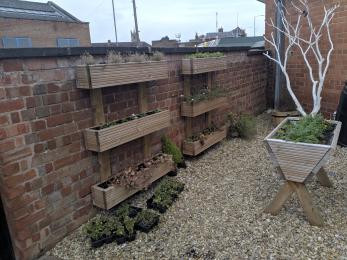
Customer care support
Emergency evacuation procedures
We have emergency evacuation procedures for all visitors. In the case of an evacuation, all visitors inside Melton Carnegie Museum will be led to safety by a member of staff or by a member of the Fire and Rescue Service. There is also a refuge point on the first floor.
Customer care support
Where available for permanent and temporary displays, large-print format can be obtained at the front desk.
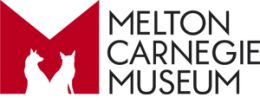
 Download this guide as docx
Download this guide as docx